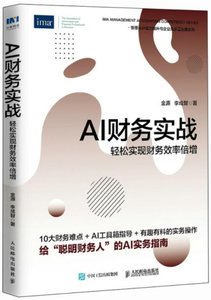Introduction to Graph Neural Networks (Paperback)
暫譯: 圖神經網絡入門 (平裝本)
Liu, Zhiyuan, Zhou, Jie
- 出版商: Morgan & Claypool
- 出版日期: 2020-03-20
- 售價: $1,760
- 貴賓價: 9.5 折 $1,672
- 語言: 英文
- 頁數: 128
- 裝訂: Quality Paper - also called trade paper
- ISBN: 1681737655
- ISBN-13: 9781681737652
-
相關分類:
DeepLearning
-
相關翻譯:
圖神經網絡導論 (簡中版)
立即出貨 (庫存=1)
買這商品的人也買了...
-
 Database Management Systems, 3/e (IE-Paperback)
Database Management Systems, 3/e (IE-Paperback)$1,200$1,176 -
 Networks: An Introduction (Hardcover)
Networks: An Introduction (Hardcover)$1,780$1,744 -
 Learning From Data (Hardcover)
Learning From Data (Hardcover)$1,200$1,176 -
 TensorFlow + Keras 深度學習人工智慧實務應用
TensorFlow + Keras 深度學習人工智慧實務應用$590$460 -
 Digital Design: With an Introduction to the Verilog HDL, VHDL, and SystemVerilog, 6/e (GE-Paperback)
Digital Design: With an Introduction to the Verilog HDL, VHDL, and SystemVerilog, 6/e (GE-Paperback)$1,380$1,352 -
 Reinforcement Learning: An Introduction, 2/e (Hardcover)
Reinforcement Learning: An Introduction, 2/e (Hardcover)$1,750$1,715 -
 Programming PyTorch for Deep Learning
Programming PyTorch for Deep Learning$1,720$1,634 -
 Introduction to Data Mining, 2/e (GE-Paperback)
Introduction to Data Mining, 2/e (GE-Paperback)$1,420$1,392 -
 圖形演算法|Apache Spark 與 Neo4j 實務範例 (Graph Algorithms)
圖形演算法|Apache Spark 與 Neo4j 實務範例 (Graph Algorithms)$580$458 -
 $422深入淺出圖神經網絡:GNN 原理解析
$422深入淺出圖神經網絡:GNN 原理解析 -
 機器學習的數學基礎 : AI、深度學習打底必讀
機器學習的數學基礎 : AI、深度學習打底必讀$580$458 -
 tf.keras 技術者們必讀!深度學習攻略手冊
tf.keras 技術者們必讀!深度學習攻略手冊$1,000$790 -
 $862計算機視覺中的多視圖幾何, 2/e (Multiple View Geometry in Computer Vision, 2/e)
$862計算機視覺中的多視圖幾何, 2/e (Multiple View Geometry in Computer Vision, 2/e) -
 精通機器學習|使用 Scikit-Learn , Keras 與 TensorFlow, 2/e (Hands-on Machine Learning with Scikit-Learn, Keras, and TensorFlow, 2/e)
精通機器學習|使用 Scikit-Learn , Keras 與 TensorFlow, 2/e (Hands-on Machine Learning with Scikit-Learn, Keras, and TensorFlow, 2/e)$1,200$948 -
 Python 神乎其技 全新超譯版 - 快速精通 Python 進階功能, 寫出 Pythonic 的程式 (Python Tricks: A Buffet of Awesome Python Features)
Python 神乎其技 全新超譯版 - 快速精通 Python 進階功能, 寫出 Pythonic 的程式 (Python Tricks: A Buffet of Awesome Python Features)$580$458 -
 機器學習|特徵工程 (Feature Engineering for Machine Learning)
機器學習|特徵工程 (Feature Engineering for Machine Learning)$520$411 -
 Practical Statistics for Data Scientists: 50+ Essential Concepts Using R and Python, 2/e (Paperback)
Practical Statistics for Data Scientists: 50+ Essential Concepts Using R and Python, 2/e (Paperback)$2,630$2,499 -
 $990Laws of UX: Using Psychology to Design Better Products & Services (Paperback)
$990Laws of UX: Using Psychology to Design Better Products & Services (Paperback) -
 深度學習的數學地圖 -- 用 Python 實作神經網路的數學模型 (附數學快查學習地圖)
深度學習的數學地圖 -- 用 Python 實作神經網路的數學模型 (附數學快查學習地圖)$580$458 -
 決心打底!Python 深度學習基礎養成
決心打底!Python 深度學習基礎養成$690$545 -
 Efficient Processing of Deep Neural Networks (Paperback)
Efficient Processing of Deep Neural Networks (Paperback)$3,150$2,993 -
 Graph Representation Learning (Paperback)
Graph Representation Learning (Paperback)$2,130$2,024 -
 Python 工匠|案例、技巧與開發實戰
Python 工匠|案例、技巧與開發實戰$550$435 -
 Biology Made Easy
Biology Made Easy$830$789 -
 跟 NVIDIA 學深度學習!從基本神經網路到 ......、GPT、BERT...,紮穩機器視覺與大型語言模型 (LLM) 的建模基礎
跟 NVIDIA 學深度學習!從基本神經網路到 ......、GPT、BERT...,紮穩機器視覺與大型語言模型 (LLM) 的建模基礎$880$695
商品描述
Graphs are useful data structures in complex real-life applications such as modeling physical systems, learning molecular fingerprints, controlling traffic networks, and recommending friends in social networks. However, these tasks require dealing with non-Euclidean graph data that contains rich relational information between elements and cannot be well handled by traditional deep learning models (e.g., convolutional neural networks (CNNs) or recurrent neural networks (RNNs)). Nodes in graphs usually contain useful feature information that cannot be well addressed in most unsupervised representation learning methods (e.g., network embedding methods). Graph neural networks (GNNs) are proposed to combine the feature information and the graph structure to learn better representations on graphs via feature propagation and aggregation. Due to its convincing performance and high interpretability, GNN has recently become a widely applied graph analysis tool.
This book provides a comprehensive introduction to the basic concepts, models, and applications of graph neural networks. It starts with the introduction of the vanilla GNN model. Then several variants of the vanilla model are introduced such as graph convolutional networks, graph recurrent networks, graph attention networks, graph residual networks, and several general frameworks. Variants for different graph types and advanced training methods are also included. As for the applications of GNNs, the book categorizes them into structural, non-structural, and other scenarios, and then it introduces several typical models on solving these tasks. Finally, the closing chapters provide GNN open resources and the outlook of several future directions.
商品描述(中文翻譯)
圖形是複雜現實應用中有用的資料結構,例如建模物理系統、學習分子指紋、控制交通網絡以及在社交網絡中推薦朋友。然而,這些任務需要處理包含元素之間豐富關聯資訊的非歐幾里得圖形資料,而傳統的深度學習模型(例如卷積神經網絡 (CNNs) 或遞迴神經網絡 (RNNs))無法很好地處理這些資料。圖中的節點通常包含有用的特徵資訊,但在大多數無監督表示學習方法(例如網絡嵌入方法)中無法得到良好的處理。圖神經網絡 (GNNs) 被提出來結合特徵資訊和圖結構,通過特徵傳播和聚合來學習更好的圖表示。由於其令人信服的性能和高可解釋性,GNN 最近成為廣泛應用的圖分析工具。
本書提供了圖神經網絡的基本概念、模型和應用的全面介紹。它首先介紹了基本的 GNN 模型。接著介紹了幾種基本模型的變體,例如圖卷積網絡、圖遞迴網絡、圖注意力網絡、圖殘差網絡以及幾個通用框架。還包括針對不同圖類型的變體和先進的訓練方法。至於 GNN 的應用,本書將其分類為結構性、非結構性和其他場景,然後介紹幾個解決這些任務的典型模型。最後的章節提供了 GNN 的開放資源以及幾個未來方向的展望。






























